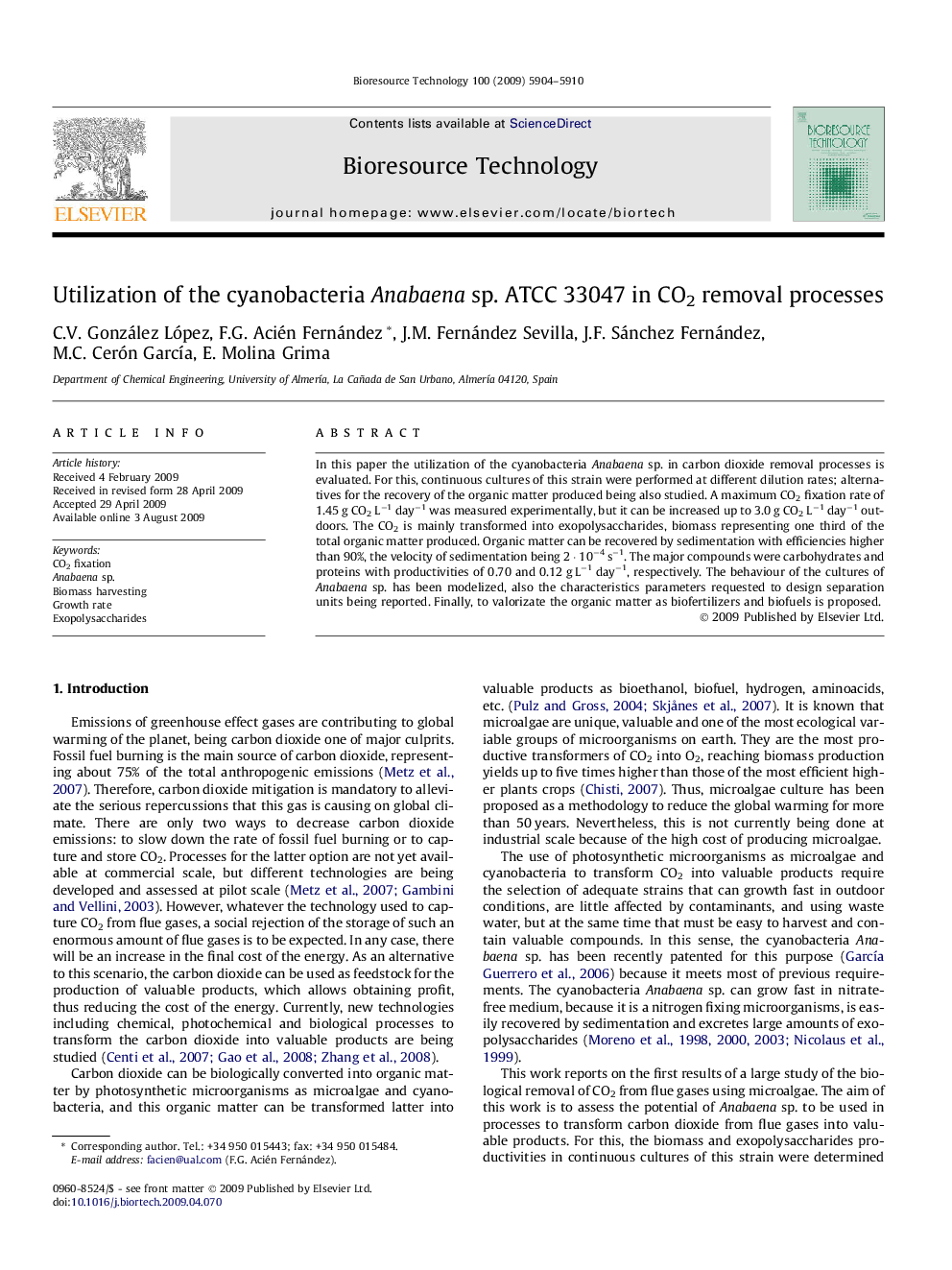| Article ID | Journal | Published Year | Pages | File Type |
|---|---|---|---|---|
| 683370 | Bioresource Technology | 2009 | 7 Pages |
Abstract
In this paper the utilization of the cyanobacteria Anabaena sp. in carbon dioxide removal processes is evaluated. For this, continuous cultures of this strain were performed at different dilution rates; alternatives for the recovery of the organic matter produced being also studied. A maximum CO2 fixation rate of 1.45 g CO2 Lâ1 dayâ1 was measured experimentally, but it can be increased up to 3.0 g CO2 Lâ1 dayâ1 outdoors. The CO2 is mainly transformed into exopolysaccharides, biomass representing one third of the total organic matter produced. Organic matter can be recovered by sedimentation with efficiencies higher than 90%, the velocity of sedimentation being 2 · 10â4 sâ1. The major compounds were carbohydrates and proteins with productivities of 0.70 and 0.12 g Lâ1 dayâ1, respectively. The behaviour of the cultures of Anabaena sp. has been modelized, also the characteristics parameters requested to design separation units being reported. Finally, to valorizate the organic matter as biofertilizers and biofuels is proposed.
Related Topics
Physical Sciences and Engineering
Chemical Engineering
Process Chemistry and Technology
Authors
C.V. González López, F.G. Acién Fernández, J.M. Fernández Sevilla, J.F. Sánchez Fernández, M.C. Cerón GarcÃa, E. Molina Grima,
